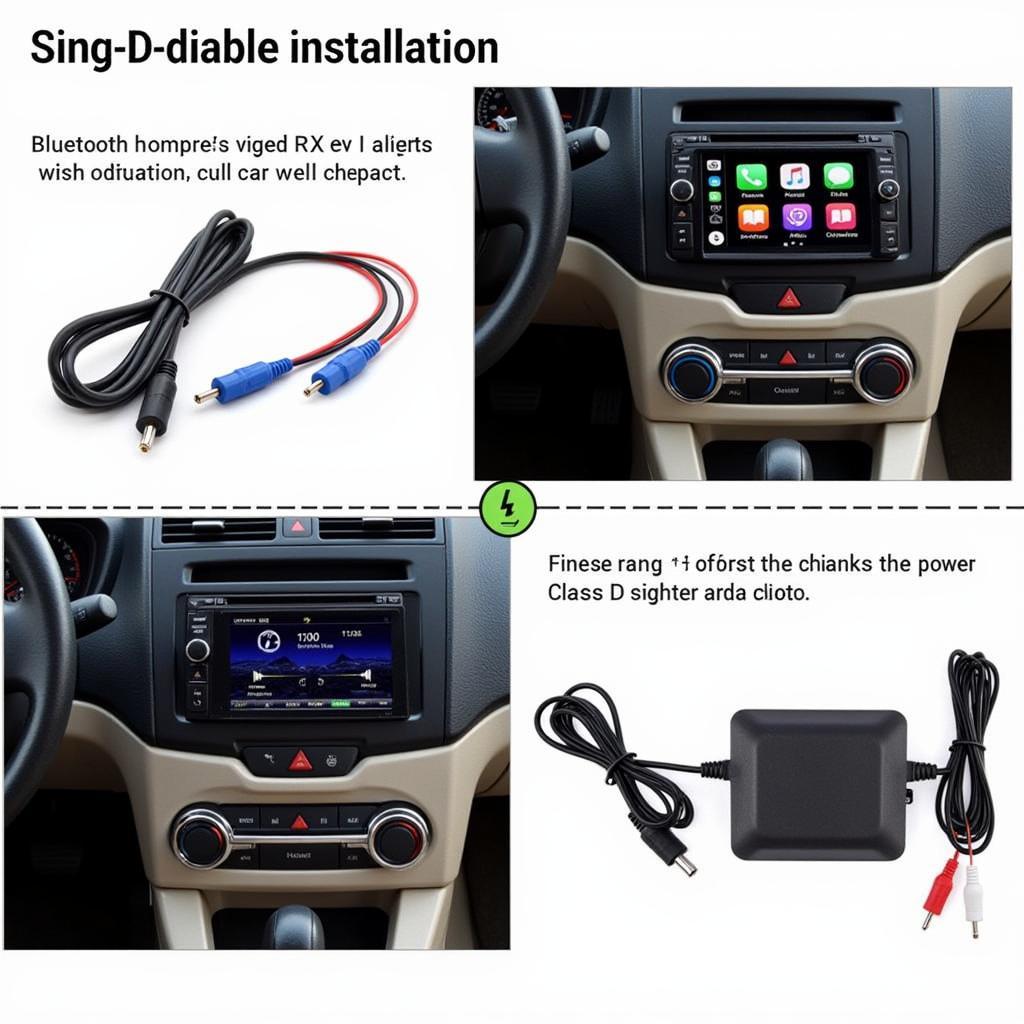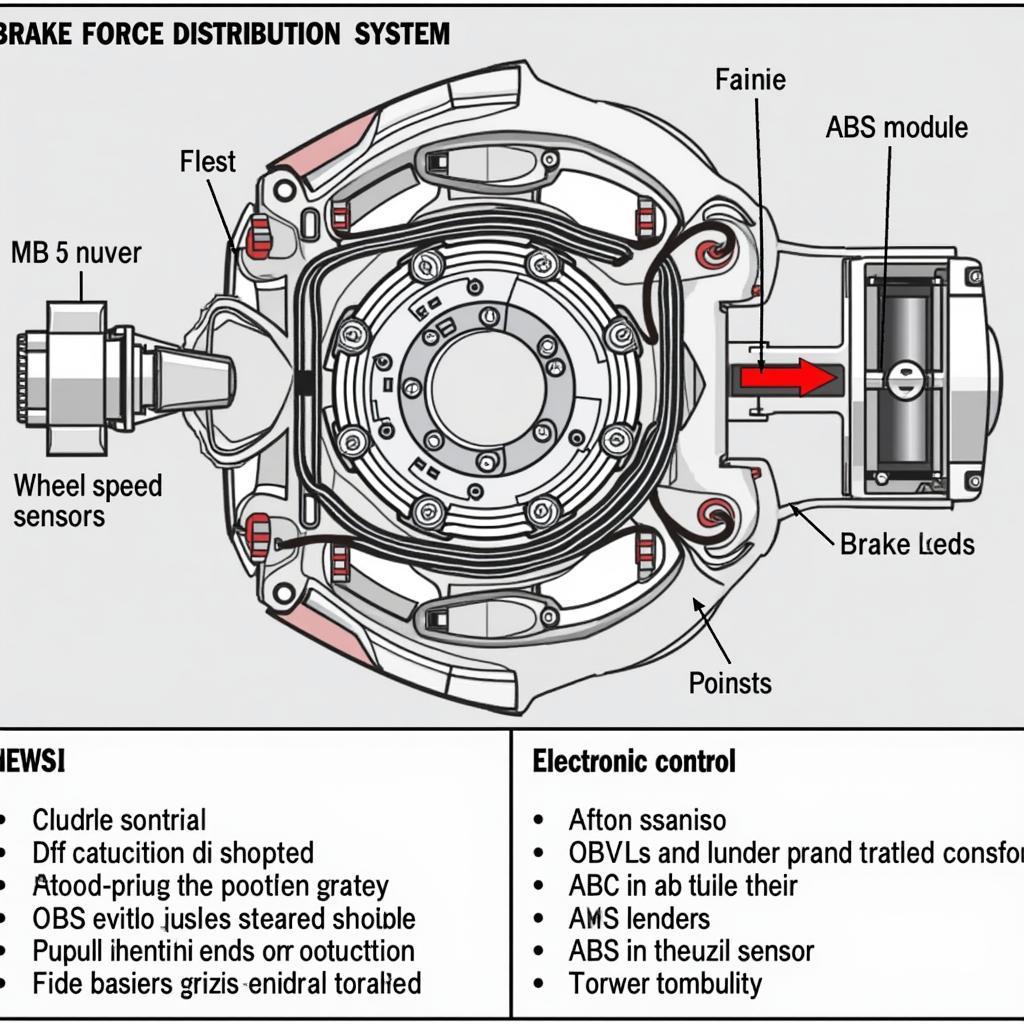Experiencing the dreaded “battery saver mode” message flashing on your Dodge Journey’s dashboard while driving can be unsettling. This article will delve into the common causes of this issue, providing you with practical solutions and diagnostic tips to get your Journey back on track.
Understanding Dodge Journey Battery Saver Mode
The battery saver mode in your Dodge Journey is designed to protect your vehicle’s electrical system by reducing non-essential power consumption when the battery voltage drops below a certain threshold. While this feature can be helpful in preventing a complete battery failure, it’s certainly not ideal to have it activate while driving. So, why does it happen?
Common Causes of Battery Saver Mode While Driving
Several factors can trigger battery saver mode while you’re on the road. These range from simple fixes to more complex electrical problems. Let’s explore the most common culprits:
- Weak or Failing Battery: The most obvious reason is a battery nearing the end of its lifespan. As batteries age, their ability to hold a charge diminishes. This can lead to voltage drops, triggering the battery saver mode.
- Faulty Alternator: The alternator’s job is to recharge the battery while the engine is running. If it’s malfunctioning, the battery won’t receive the necessary charge, eventually activating battery saver mode.
- Parasitic Drain: A parasitic drain occurs when an electrical component continues to draw power even when the vehicle is off. This slow but constant drain can deplete the battery over time, leading to low voltage and activating the battery saver mode.
- Loose or Corroded Battery Terminals: Poor connections at the battery terminals can restrict the flow of current, leading to voltage drops and triggering the battery saver mode.
- Electrical System Issues: Less commonly, problems with other components of the electrical system, such as wiring harnesses or fuses, can contribute to battery saver mode activation.
Diagnosing the Problem
Pinpointing the exact cause requires some investigative work. Here’s a step-by-step guide to help you diagnose the issue:
- Check the Battery Terminals: Inspect the battery terminals for any signs of corrosion or looseness. Clean any corrosion with a wire brush and baking soda solution. Tighten the terminals securely.
- Test the Battery: Use a multimeter to test the battery voltage. A healthy battery should read around 12.6 volts with the engine off.
- Test the Alternator: With the engine running, the voltage should read between 13.5 and 14.5 volts. A lower reading indicates a potential alternator problem.
- Check for Parasitic Drain: With the engine off and all accessories turned off, use a multimeter to measure the current draw. A drain of more than 50 milliamps could indicate a parasitic drain.
Solutions and Fixes
Once you’ve identified the cause, you can take the appropriate steps to resolve the issue:
- Battery Replacement: If the battery is weak or failing, replacement is the most straightforward solution.
- Alternator Repair or Replacement: A faulty alternator will need to be repaired or replaced.
- Address Parasitic Drain: Identify and fix the component causing the parasitic drain. This may involve repairing or replacing faulty wiring, relays, or other electrical components.
- Clean and Tighten Battery Terminals: Ensure clean and tight connections at the battery terminals.
Why is my Dodge Journey showing battery saver mode while driving?
A common reason your Dodge Journey displays battery saver mode while driving is a failing alternator. The alternator isn’t charging the battery sufficiently, leading to the activation of battery saver mode.
Can I drive my Dodge Journey with battery saver mode on?
While you can technically drive with battery saver mode on, it’s not recommended. Driving with a compromised electrical system can lead to further issues and potentially leave you stranded.
Remote Diagnostics and Software Updates
As a specialist in automotive electrical engineering, I often utilize remote diagnostics and software updates to address vehicle issues like battery saver mode. These techniques allow me to identify and resolve problems quickly and efficiently, often without the need for a physical visit. This can save you time and money, especially if the issue is software-related.
“Remote diagnostics are revolutionizing the way we diagnose and repair vehicles. It allows us to pinpoint the root cause of problems much faster than traditional methods.” – John Davis, Automotive Electrical Engineer.
Conclusion
Experiencing battery saver mode while driving your Dodge Journey can be frustrating, but understanding the potential causes and knowing how to diagnose the problem can empower you to take the necessary steps to resolve the issue. Regular maintenance, including battery and alternator checks, can also help prevent this problem from occurring in the first place. Remember, a properly functioning electrical system is crucial for a safe and reliable driving experience.
FAQ
- How often should I replace my Dodge Journey’s battery? Typically, car batteries last between 3 and 5 years.
- What are the signs of a failing alternator? Dimming headlights, flickering interior lights, and strange noises from the engine compartment can all indicate a failing alternator.
- Can a bad ground cause battery saver mode? Yes, a poor ground connection can disrupt the electrical system and contribute to battery saver mode.
- Is it safe to jump-start a car in battery saver mode? Yes, it is generally safe to jump-start a car in battery saver mode, but follow proper jump-starting procedures.
- Can extreme temperatures affect battery performance? Yes, both extreme heat and cold can negatively impact battery performance.
- How can I prevent battery saver mode from activating? Regular battery and alternator checks, along with addressing any parasitic drains promptly, can help prevent battery saver mode.
- Can I reset battery saver mode myself? Sometimes, simply addressing the underlying issue (like a low battery charge) will automatically reset the battery saver mode. However, in some cases, a diagnostic scan tool may be required to clear any error codes and reset the system.
“Preventive maintenance is key to avoiding costly repairs down the road. Regularly checking your battery and alternator can save you a lot of headaches in the long run.” – Sarah Miller, Certified Automotive Technician.



